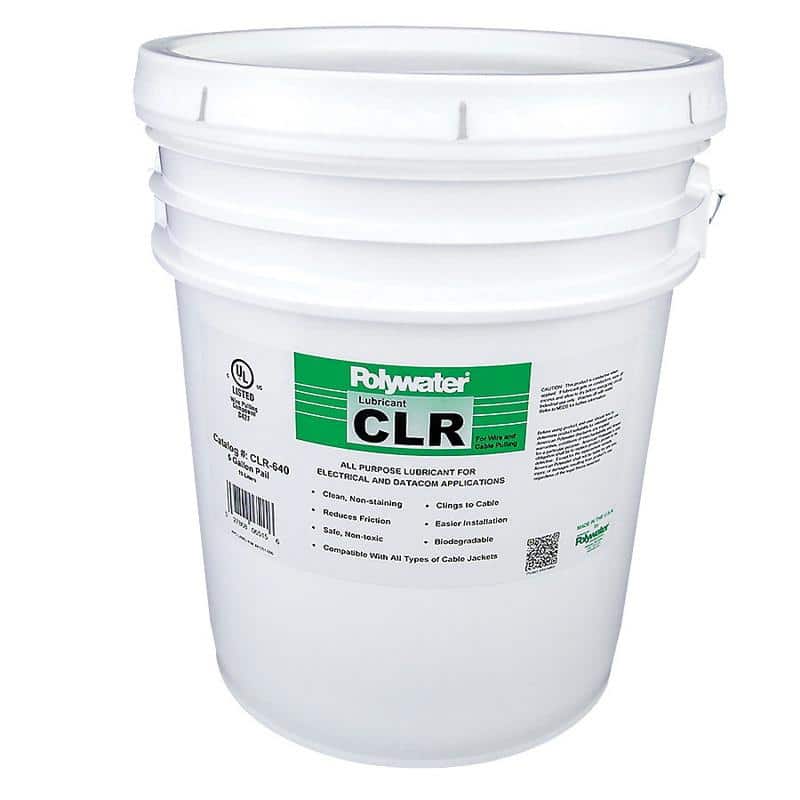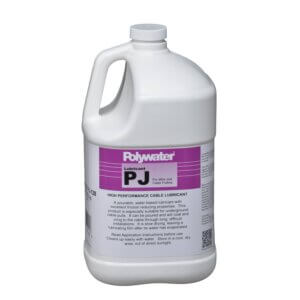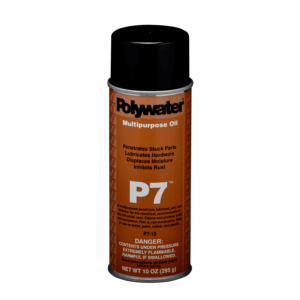CLR-640 includes: |
|---|
Clear Cable Pulling Lubricant for Electrical Applications
Polywater® CLR Clear Cable Pulling Lubricant is a clear, colorless, clean, slow-drying, easy-to-apply gel lubricant. This thick gel lubricant was developed to avoid drippage to make handling and application easy. Polywater CLR is a good lubricant for everyday cable pulling.
The dried residue of Polywater CLR Lubricant is harmless to humans, environmentally safe, and compatible with cable jacket materials.
Specifications and Applications:
Cable Compatibility: Passes IEEE 1210 physical and electrical testing on a wide variety of cable materials. It does not stress crack polyethylene.
Physical Properties: Dries slippery. Unlike wax lubes, it leaves little residue and will not cement cables to conduit. Contains no wax, grease, or silicone.
Temperature Use Range: 20°F to 120°F (-5°C to 50°C).
Temperature Stability: No phase-out after five freeze/thaw cycles or 5-day exposure at 120°F (50°C).







